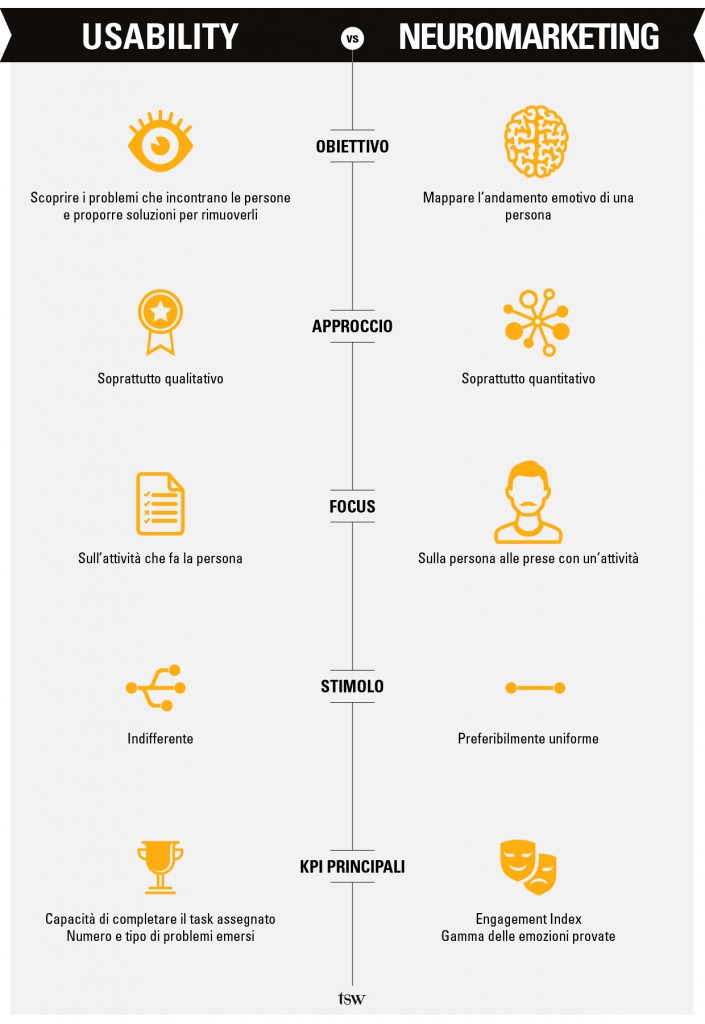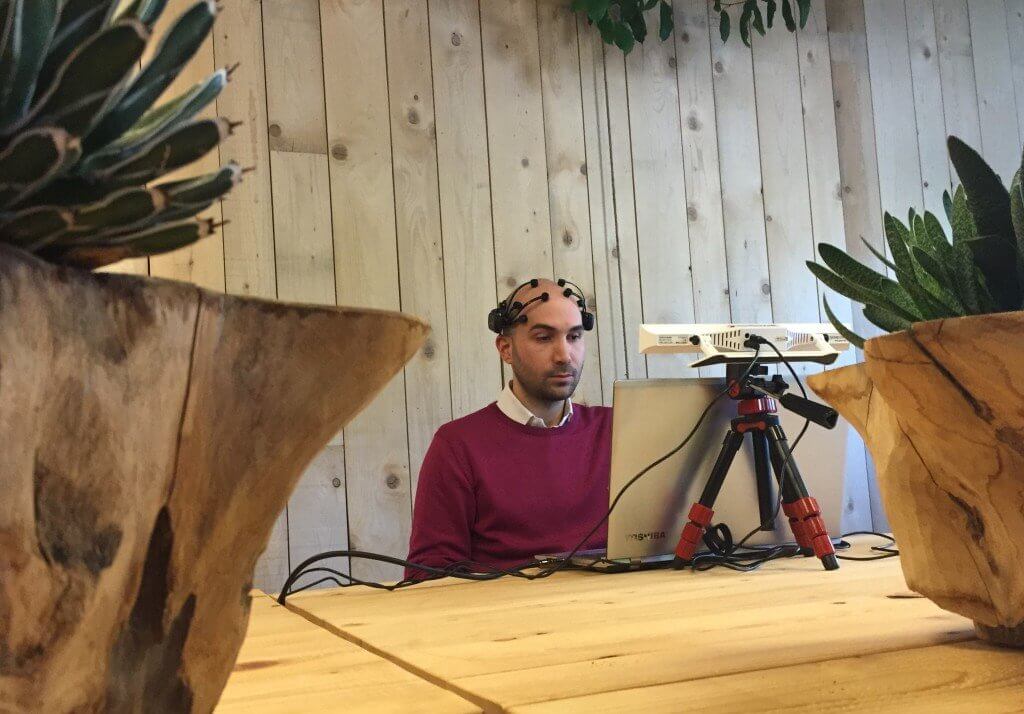For some time in our blog we tell of the evolution we are giving to our concept of user experience, through two disciplines: usability and the neuromarketing.
The partnership with Qwince it is for us an index of the interest and speed with which we wish to push towards their integration. Usability and neuromarketing, however, have different objectives and characteristics: integrating them into a single test mechanism and making them work together is far from obvious.
Qwince has developed Neuralya, the tool that allows us to integrate different biometric sensors into a single platform (eye tracking, facial expression, EEG, GSR/EDA) able to evaluate the rational, emotional and instinctual reactions of potential customers. Thanks to Neuralya we could extend the set of metrics to understand what the customer thinks and feels.
Usability and neuromarketing: main features
The following table represents the characteristics in a schematic way.

It is clear that the two disciplines have a different nature: on the one hand, integrating the methodology and approach of each with the other is far from easy. On the other hand, combining them while doing research with people gives an incredible wealth of objective and detailed information. Moreover, usability promises to measure the effectiveness, efficiency and satisfaction with which people use a physical or digital interface. Until recently we could measure satisfaction in a very mediated and indirect way. Today we can establish the degree of satisfaction we have experienced directly, far beyond the verbal restitution that people make of it. For us, innovation means exploiting a consolidated history of skills through technology.
The combination of #usability and #neuromarketing gives us a disintermediate analysis
The integrated “neurosability”
To tell closely what a test is that integrates the two disciplines described I take advantage of a recent joint working day of TSW and Qwince. A test of this kind, which I could refer to as “neurosability”, integrates the heuristic approach of a usability test – which looks for problems to be solved – with the diagnostic one of neuromarketing – which photographs the emotional response to a stimulus.
Discover the 3 steps of the integrated test of #usability and #neuromarketing #neurosability
Introduction and welcome
It is probably the most important part of the test. It is necessary for the participant to feel comfortable and behave naturally. Compared to a “traditional” usability test, the tools for detecting the emotional state are more invasive. For this reason the protocol that we have developed cushions this aspect and allows us to obtain an excellent approximation of spontaneous behavior. It is important to remain faithful to the cardinal principle of the usability test, according to which it is not the user under test, to ensure that his emotional response is as credible as possible.
Baseline recording
The first phase of the test consists of two parts:
- Instrument calibration (eg. EEG ed eye tracking)
- Determination of emotional state of the person, from a situation completely at rest to one with a slight degree of stress
In this way we are sure of the correctness of the data from 2 points of view: reliability of the instrument and knowledge of the deviation of a person’s emotional state with respect to a starting condition.

Conducing the test
The user is faced with the tasks designed by TSW together with the customer and tries to complete what is required of him. This phase does not change with respect to a traditional usability test with eye tracking, if not for an important aspect: when to do think aloud with people (ie when to ask to express their thoughts aloud) and when instead prefer them not to speak.
Report
It is the phase we are exploring with more intensity.
Conducting the test generates a very large amount of data; for each person who takes part in the test we get: navigation videos, navigation paths, eye movements, pupil size, electrical frequency of the brain, verbalization of people and much more.
On the other hand, a good report should be:
· Exhaustive. But it should not leave the customer the burden of finding important data
· Consistent. But he must not fail to mention even contradictory aspects that emerge from people, especially considering the emotional component
· Actionable. But it must frame the vision that the search with the users has offered
A promising direction that we have undertaken concerns the definition of new KPIs, which take advantage of biomonitoring information in relation to usability metrics: we will thus have emotional barriers alongside usability barriers. How much do the stress factors – for example – affect the success of a purchase process? To what extent is the brand affected by a negative perception, even in the absence of serious usability problems?
It is important to measure the usability of a site together with biomonitoring information
These are the answers we are giving in this ocean of exciting possibilities which is the integrated usability and neuromarketing test.